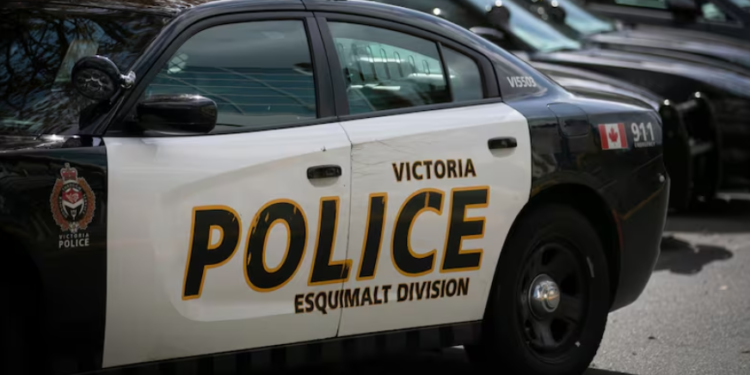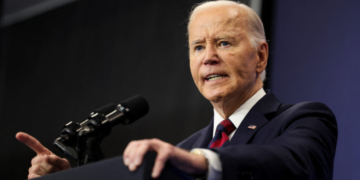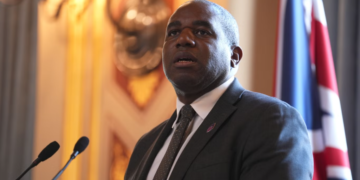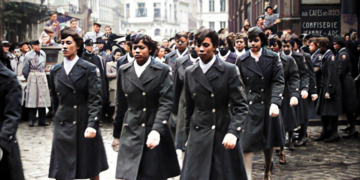Jan 27, 2025 Story by: Editor
New data from VicPD, released under an order by the B.C. Human Rights Commissioner, reveals that police in Victoria have disproportionately used force on Indigenous and Black individuals in recent years.
The report, covering data from 2018 to 2023, is part of an ongoing inquiry by the B.C. Human Rights Commissioner into police use of force across the province. The commissioner’s full findings are expected to be published later this year.
VicPD acknowledges an “overrepresentation” of Indigenous people in use-of-force cases, according to the report. Black individuals were also disproportionately involved in such cases.
Statistics Canada reports that Indigenous people make up 5% of Greater Victoria’s population but were involved in 17% of VicPD’s 1,685 use-of-force incidents during the five-year period. Similarly, Black individuals, who constitute 1.3% of the population, accounted for 3% of these incidents.
VicPD defines “use of force” as a broad range of actions, from drawing a weapon or applying “soft physical control” that causes injury, to shootings.
Adam Olsen, a member of the Tsartlip First Nation and former B.C. Green Party MLA, criticized the lack of action by the province and police departments in addressing systemic racism within law enforcement. He stated that the overrepresentation of Black and Indigenous individuals in such data is a result of these failures.
“It’s not surprising,” Olsen said. “There was a pretty substantive reluctance among the policing community to really engage the problem where it is … we do expect them to be able to look internally at their organizations that they run and see that systemically, they’ve got challenges with racism and discrimination.”
In 2022, a special committee on reforming the Police Act, on which Olsen served, proposed 11 recommendations to tackle systemic racism. These included establishing a civilian-led oversight agency for police and public safety workers, requiring race-based data reporting, revising policing policies, and ensuring Indigenous communities have input in their police services.
Overrepresentation Reflects Broader Systemic Issues
Between 2018 and 2023, VicPD responded to 316,491 calls for service. Of those, 1,685, or approximately 1 in 200, involved the use of force. Among these, 56 incidents involved youth, 25% of whom were racialized.
VicPD says officers are trained in crisis intervention, de-escalation techniques, and understanding the impacts of colonization on Indigenous communities. They also receive training on racial bias and fostering positive relationships with Indigenous groups.
The report acknowledges that the overrepresentation of Indigenous individuals in use-of-force incidents mirrors broader systemic issues in the justice system, such as the overrepresentation of Indigenous people among the unhoused population. The report states this does not indicate a deliberate targeting of any specific ethnicity.
Calls for Transparency
CBC News reached out to VicPD Chief Del Manak, who was unavailable for comment. The report’s lack of detail on who initiated the use of force, the level of force applied, and the nature of the incidents has drawn criticism.
VicPD spokesperson Cheryl Major explained that the additional context was excluded because it was not requested but added, “any use of force is always in response to subject behavior.”
Olsen argued that if such information provides important context, it is the department’s responsibility to include it.
“It should be more specific if they’re going to use the lack of specificity as an excuse,” he said. “If they’re going to use that lack of clarity as a way to distract us from what we’re actually seeing, then that’s a problem.”
The B.C. Human Rights Commissioner’s office declined to comment, noting that their analysis of the data is ongoing.
Addressing Systemic Inequities
Olsen believes police reform in B.C. will take at least a decade, and he criticized the province for being two years behind on implementing necessary changes. He also emphasized that systemic issues such as inadequate mental health services and housing for Indigenous communities need to be addressed alongside police reforms.
“It is right to be critical of the police until they fully embrace the systemic nature of the ongoing experience that Indigenous people have in their relationships with policing,” Olsen said. “While they’re addressing that, we should also be arguing very strongly to the provincial government that the current situation isn’t good enough, where we rely on the wrong service to deliver support for people that they’re not adequately trained to do.”
The VicPD report comes as the B.C. Human Rights Commission continues its investigation into police use of force across the province. Source: CBC

















